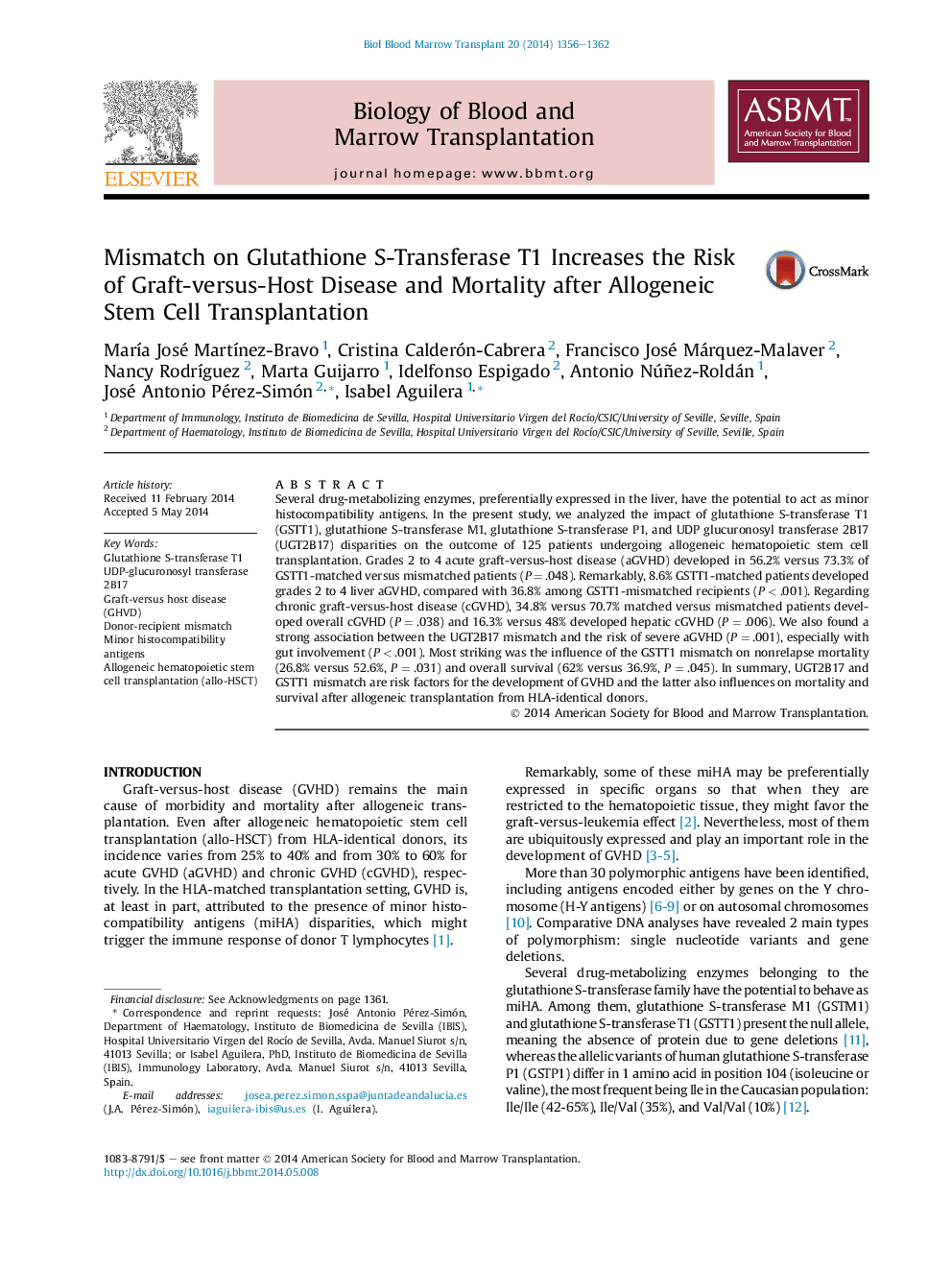| Article ID | Journal | Published Year | Pages | File Type |
|---|---|---|---|---|
| 2101907 | Biology of Blood and Marrow Transplantation | 2014 | 7 Pages |
Several drug-metabolizing enzymes, preferentially expressed in the liver, have the potential to act as minor histocompatibility antigens. In the present study, we analyzed the impact of glutathione S-transferase T1 (GSTT1), glutathione S-transferase M1, glutathione S-transferase P1, and UDP glucuronosyl transferase 2B17 (UGT2B17) disparities on the outcome of 125 patients undergoing allogeneic hematopoietic stem cell transplantation. Grades 2 to 4 acute graft-versus-host disease (aGVHD) developed in 56.2% versus 73.3% of GSTT1-matched versus mismatched patients (P = .048). Remarkably, 8.6% GSTT1-matched patients developed grades 2 to 4 liver aGVHD, compared with 36.8% among GSTT1-mismatched recipients (P < .001). Regarding chronic graft-versus-host disease (cGVHD), 34.8% versus 70.7% matched versus mismatched patients developed overall cGVHD (P = .038) and 16.3% versus 48% developed hepatic cGVHD (P = .006). We also found a strong association between the UGT2B17 mismatch and the risk of severe aGVHD (P = .001), especially with gut involvement (P < .001). Most striking was the influence of the GSTT1 mismatch on nonrelapse mortality (26.8% versus 52.6%, P = .031) and overall survival (62% versus 36.9%, P = .045). In summary, UGT2B17 and GSTT1 mismatch are risk factors for the development of GVHD and the latter also influences on mortality and survival after allogeneic transplantation from HLA-identical donors.
